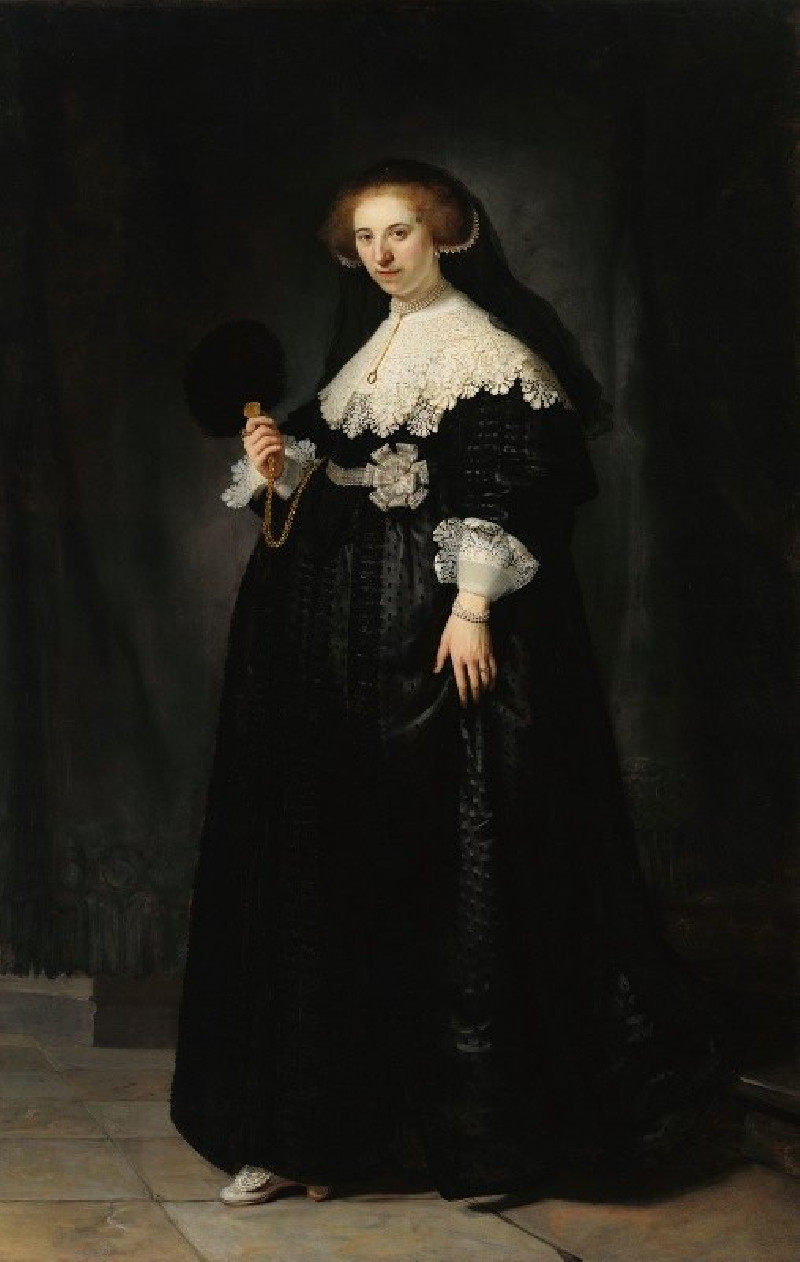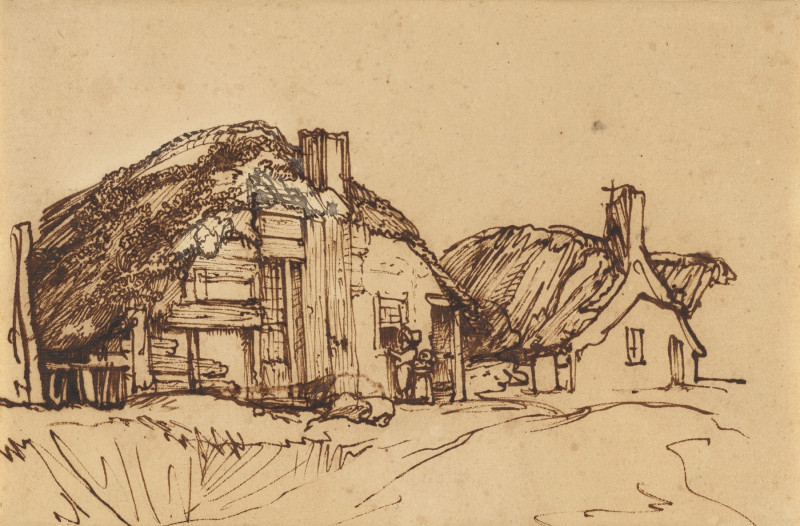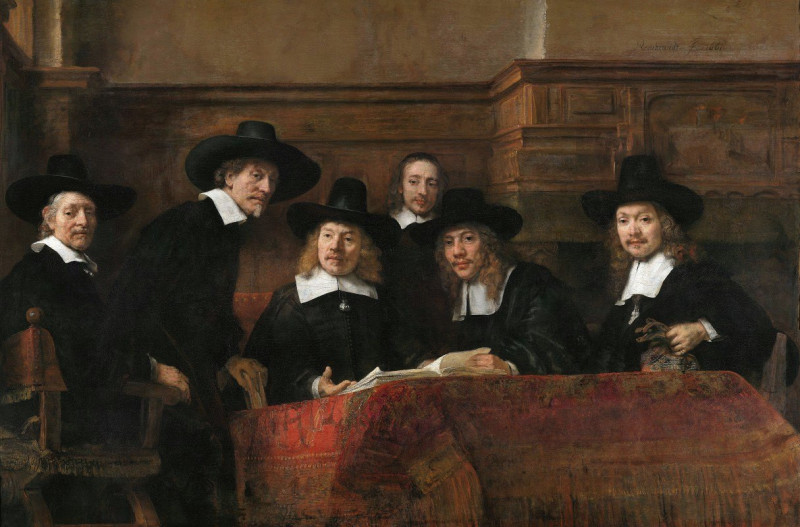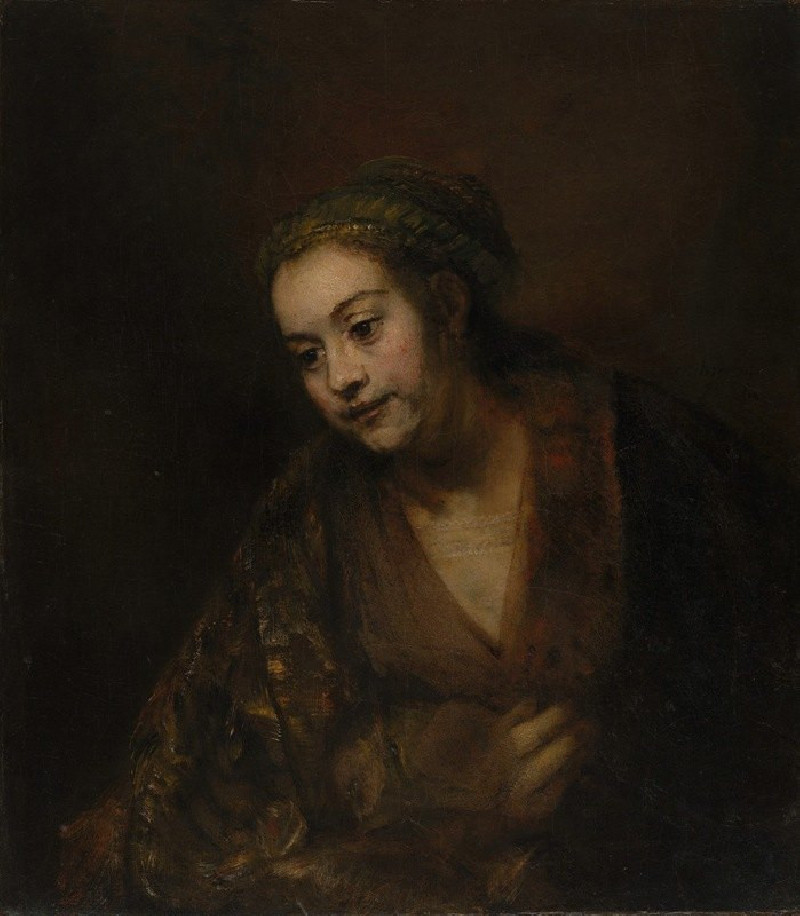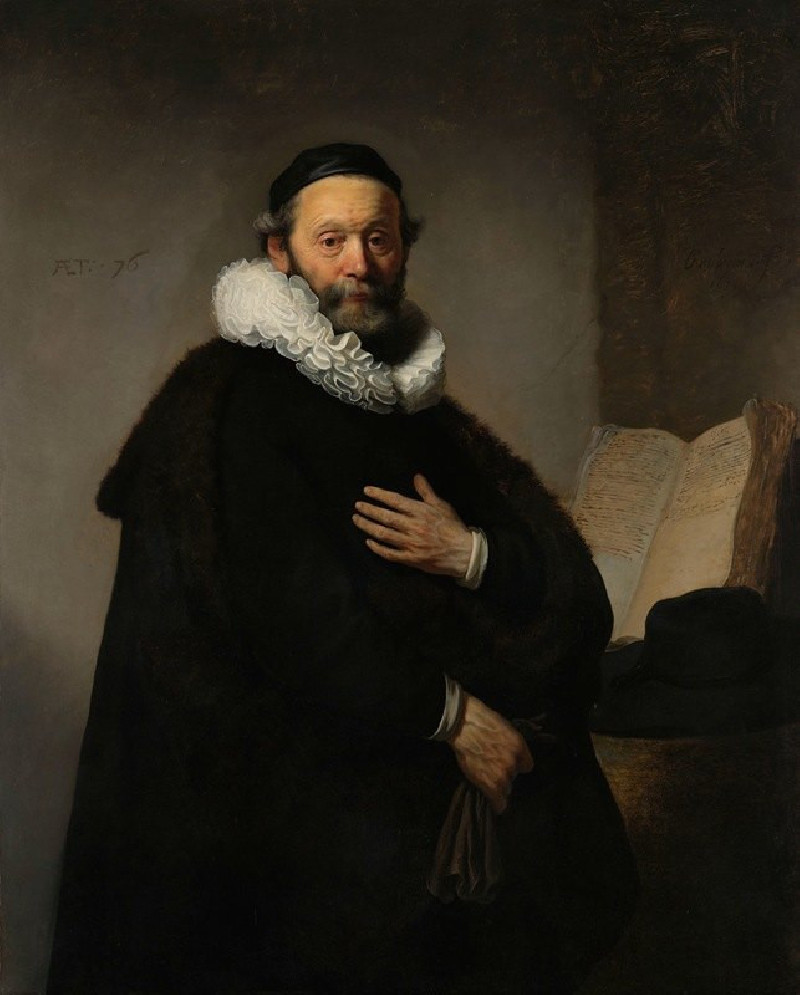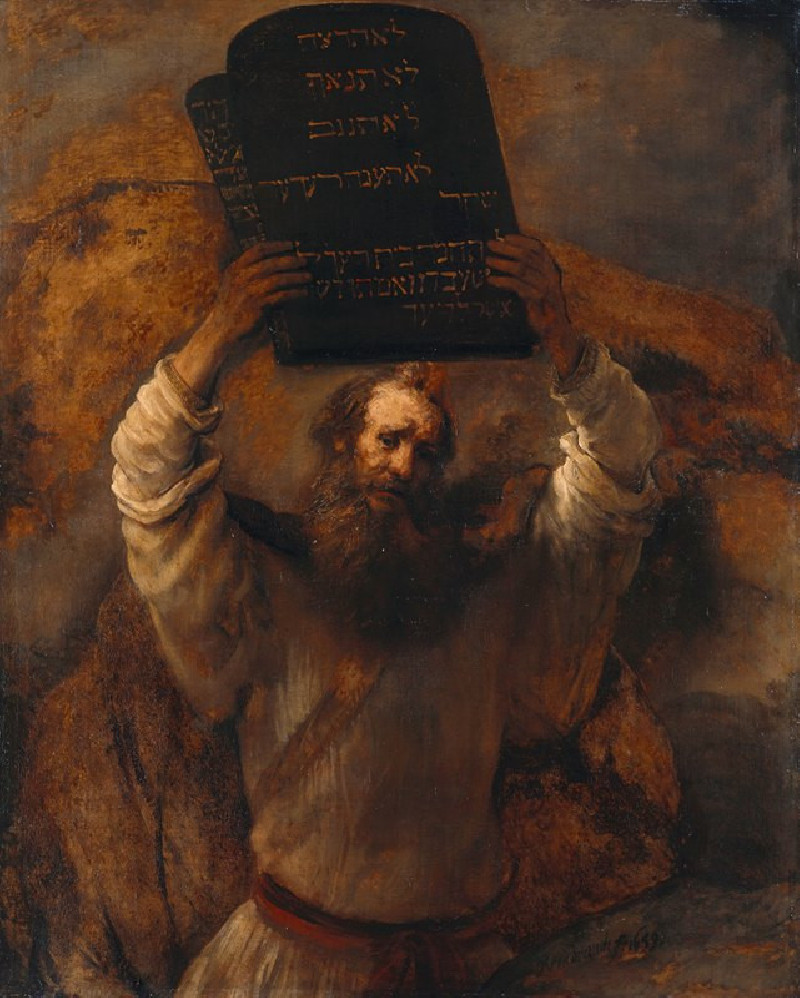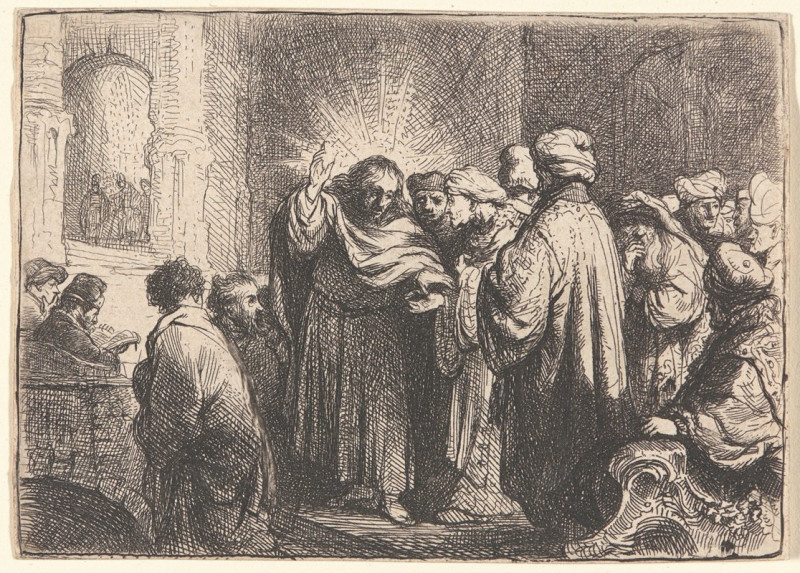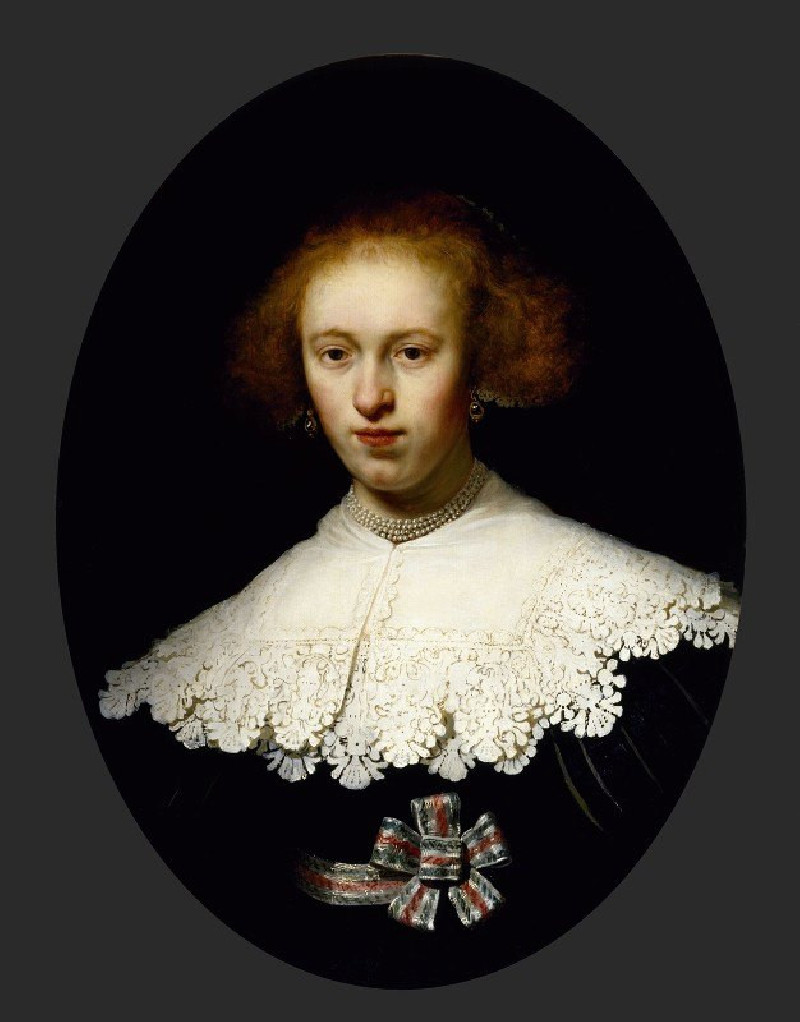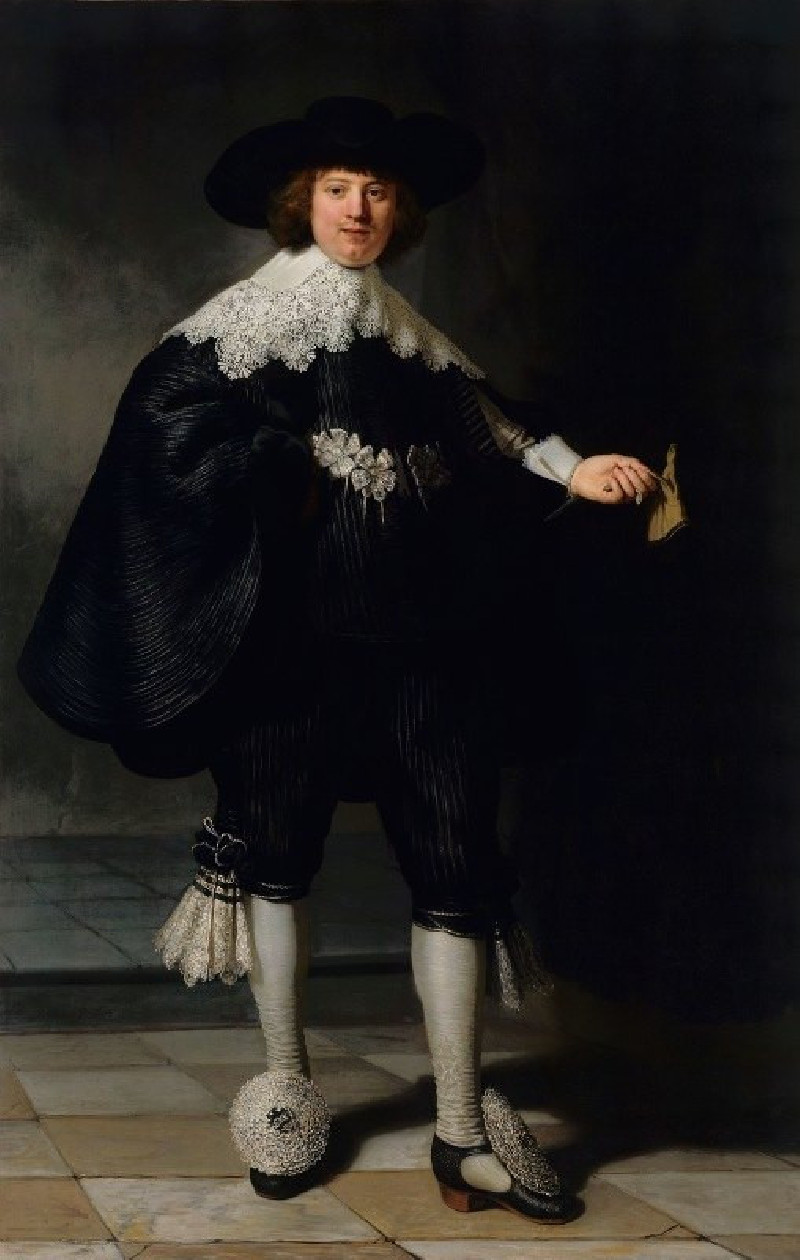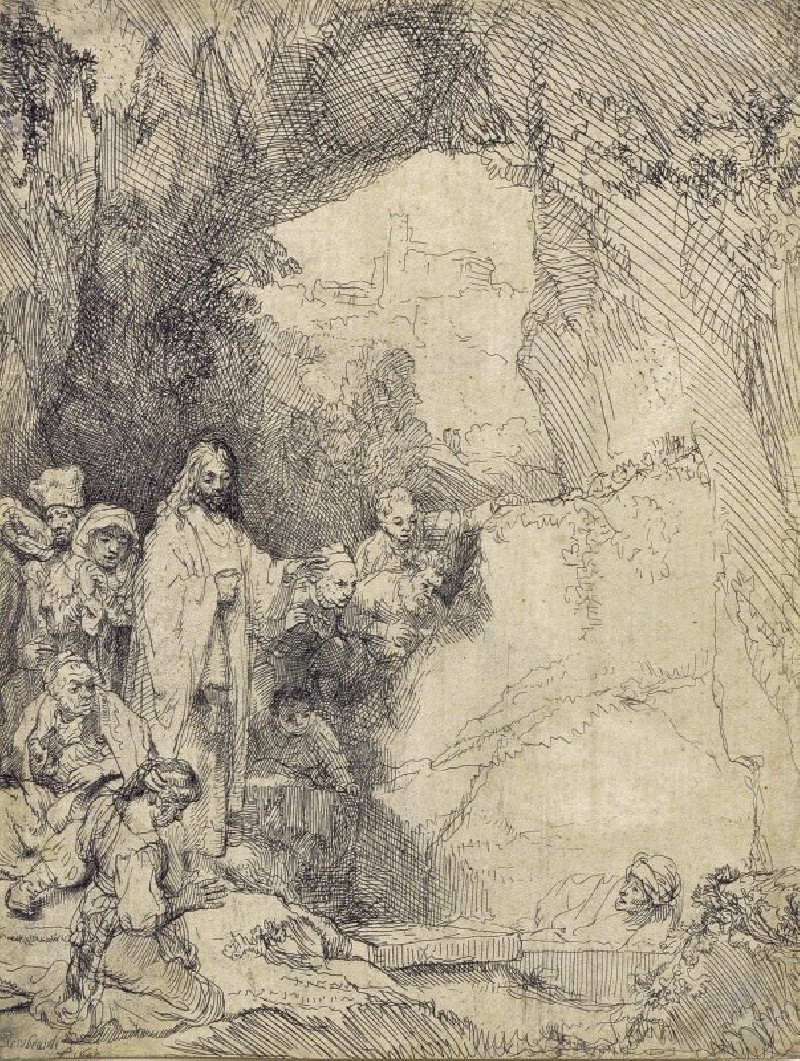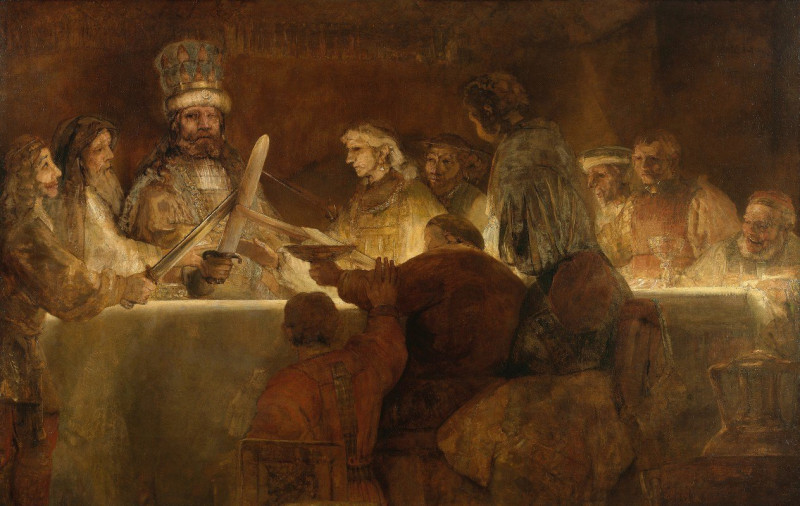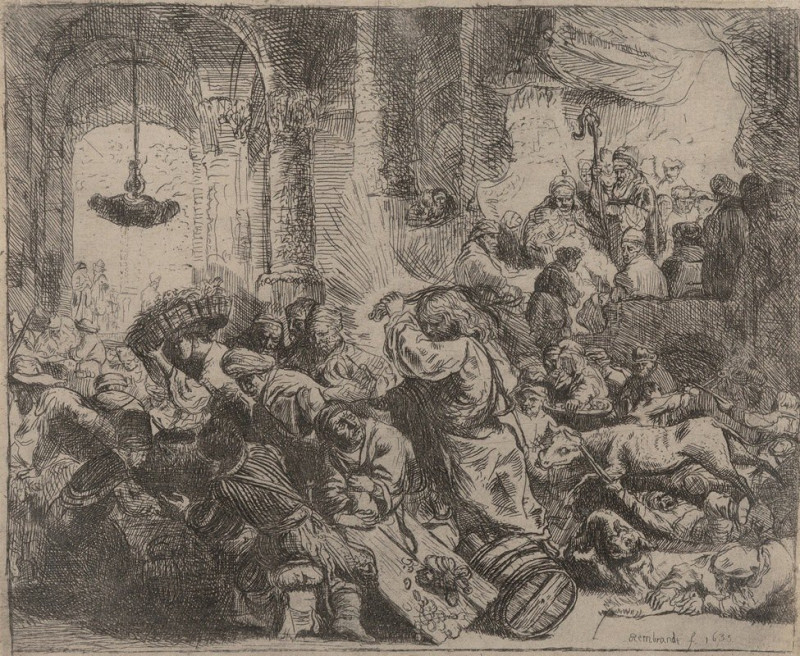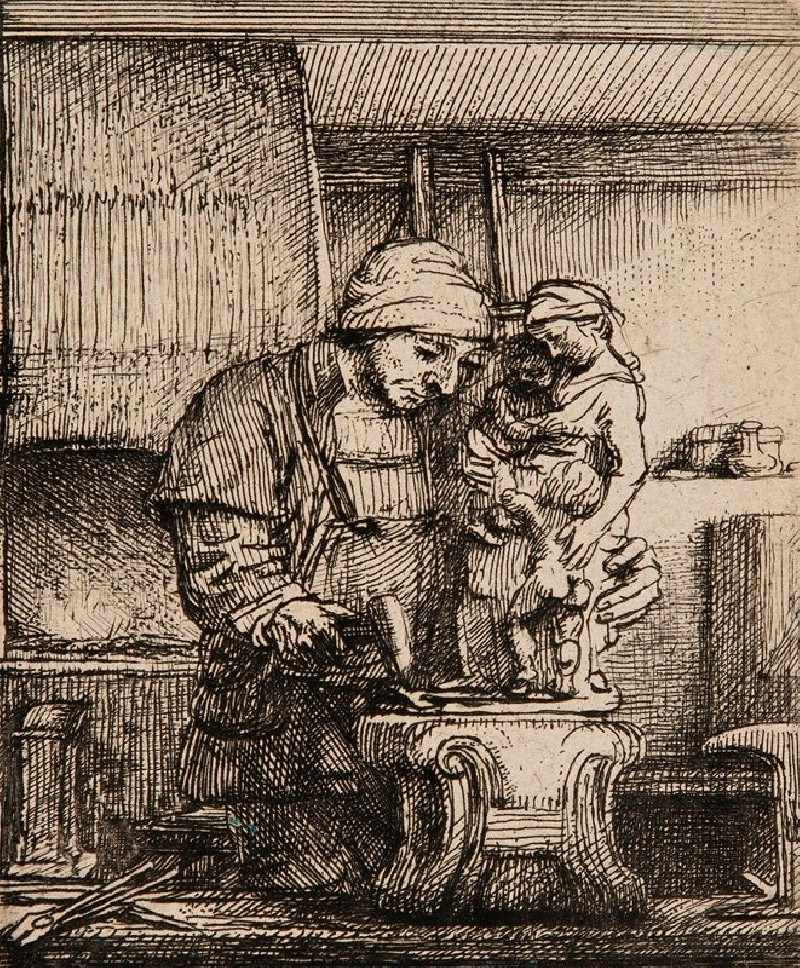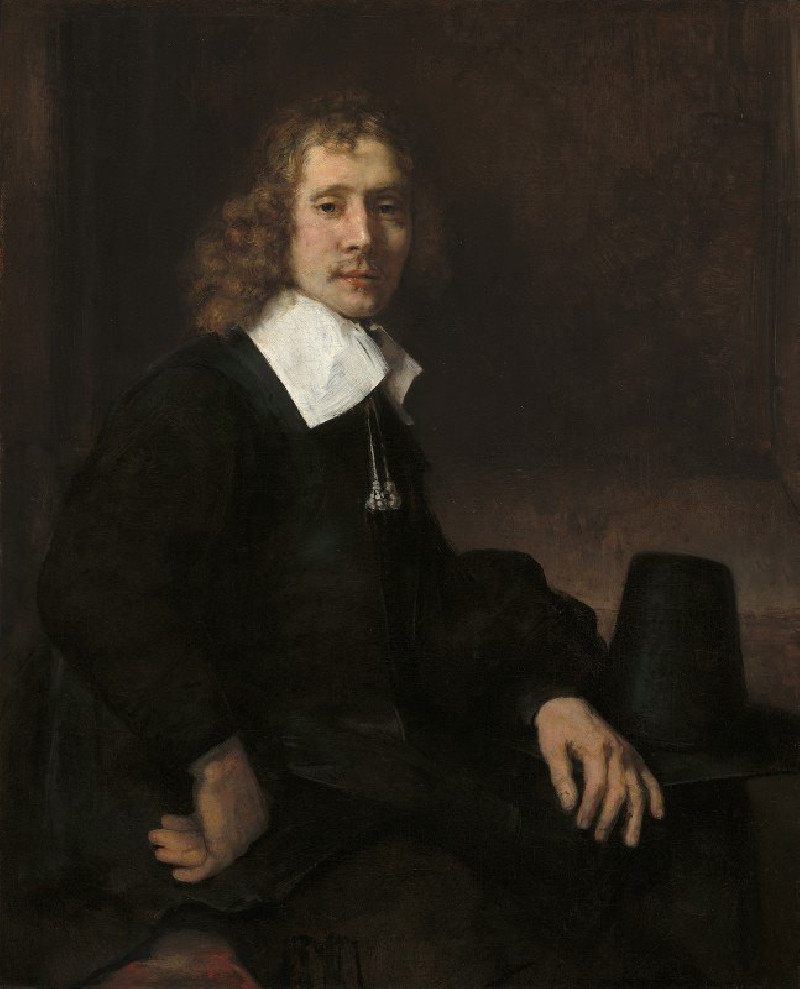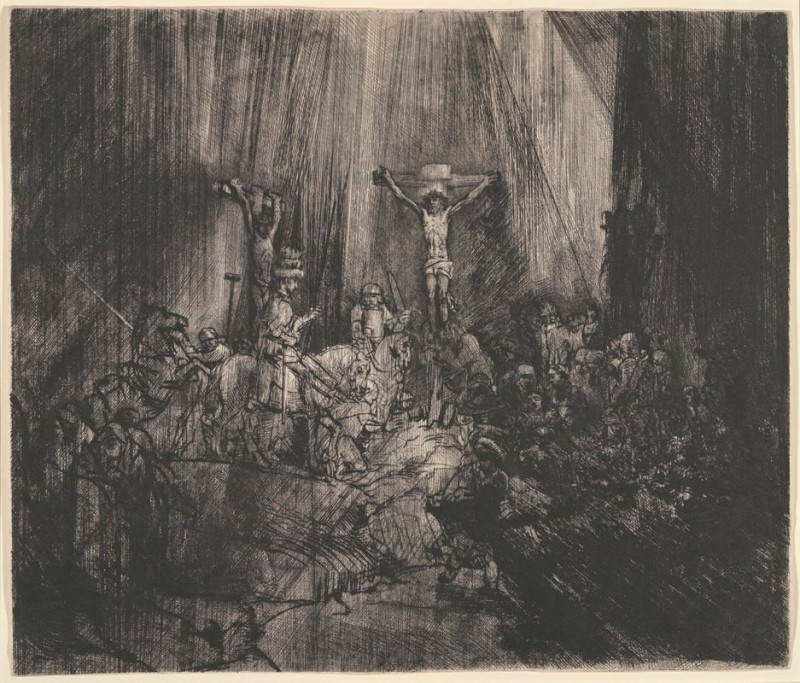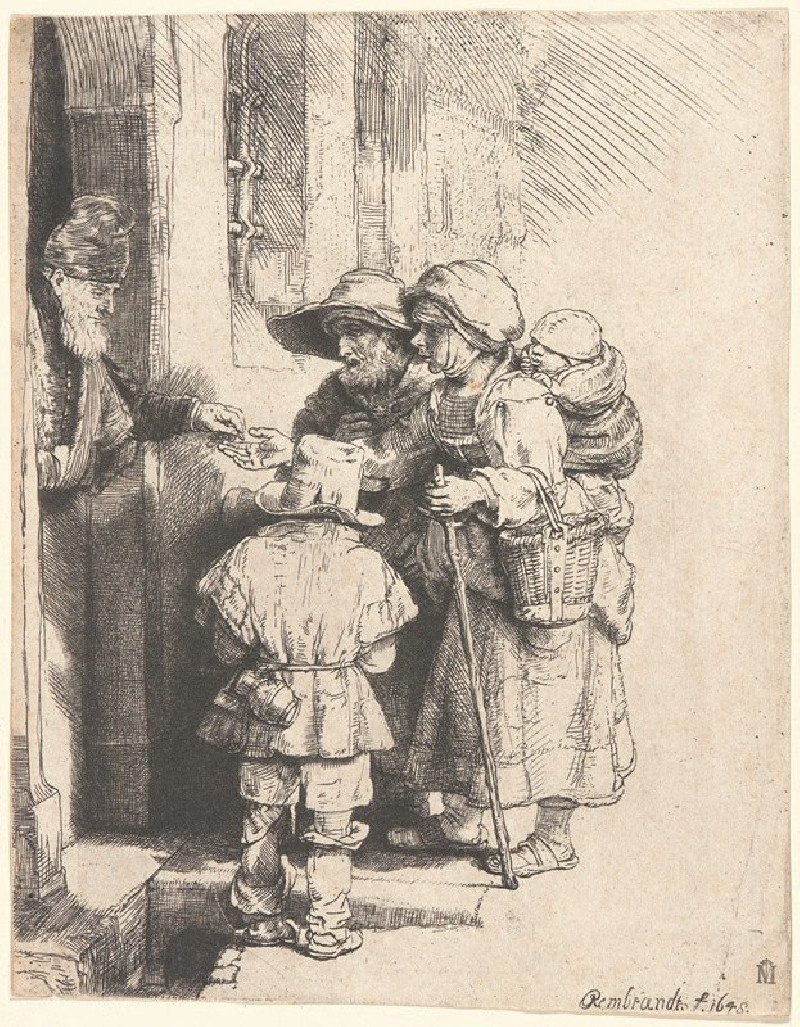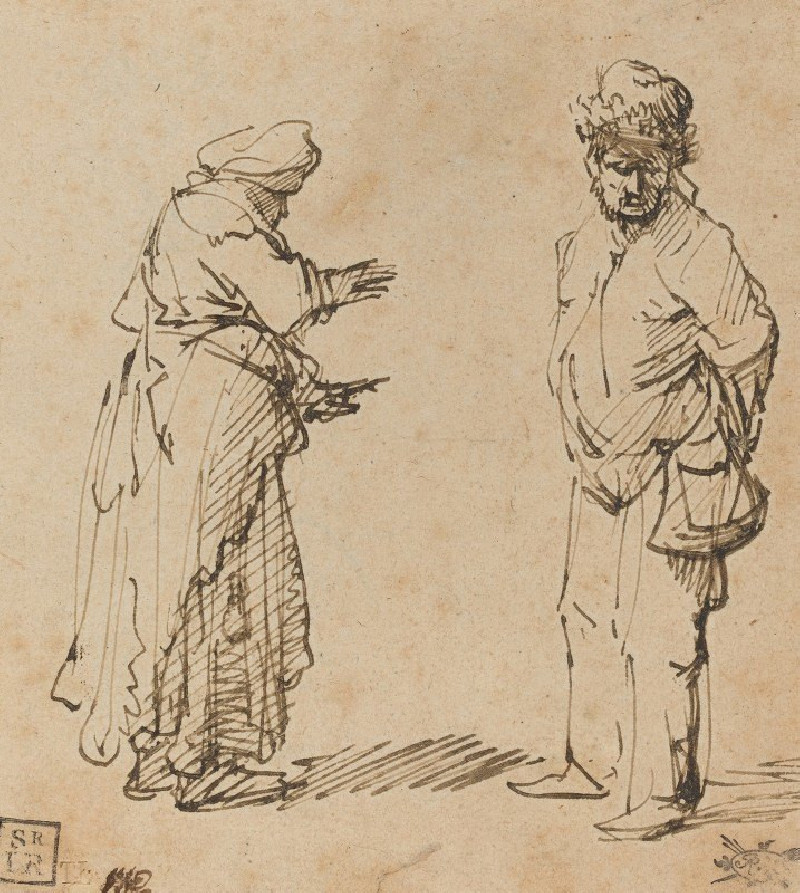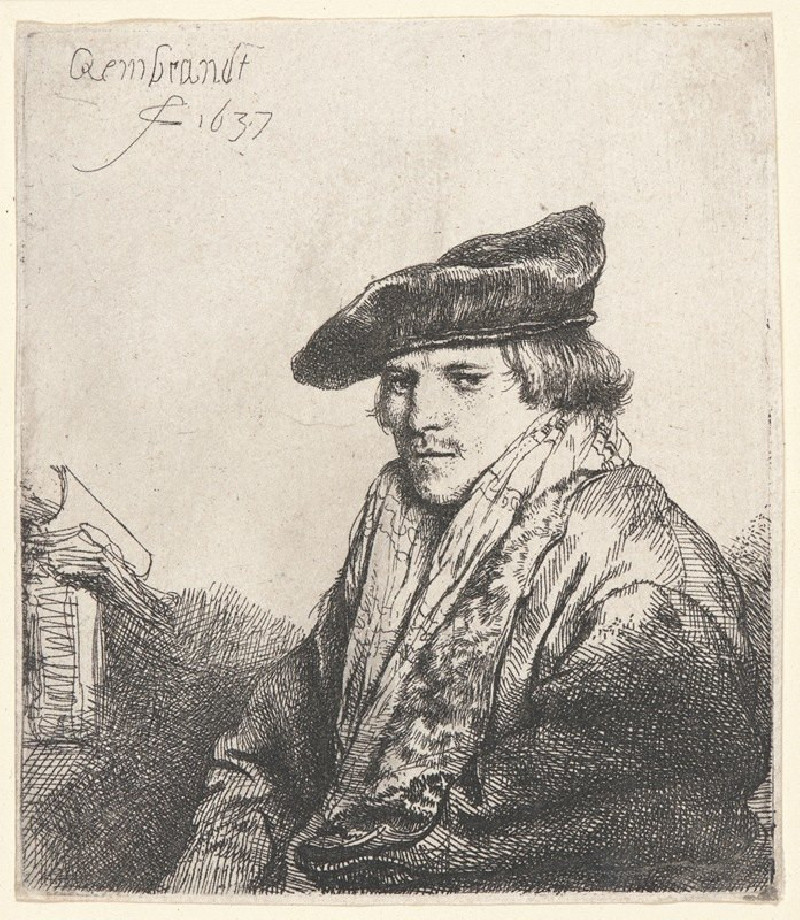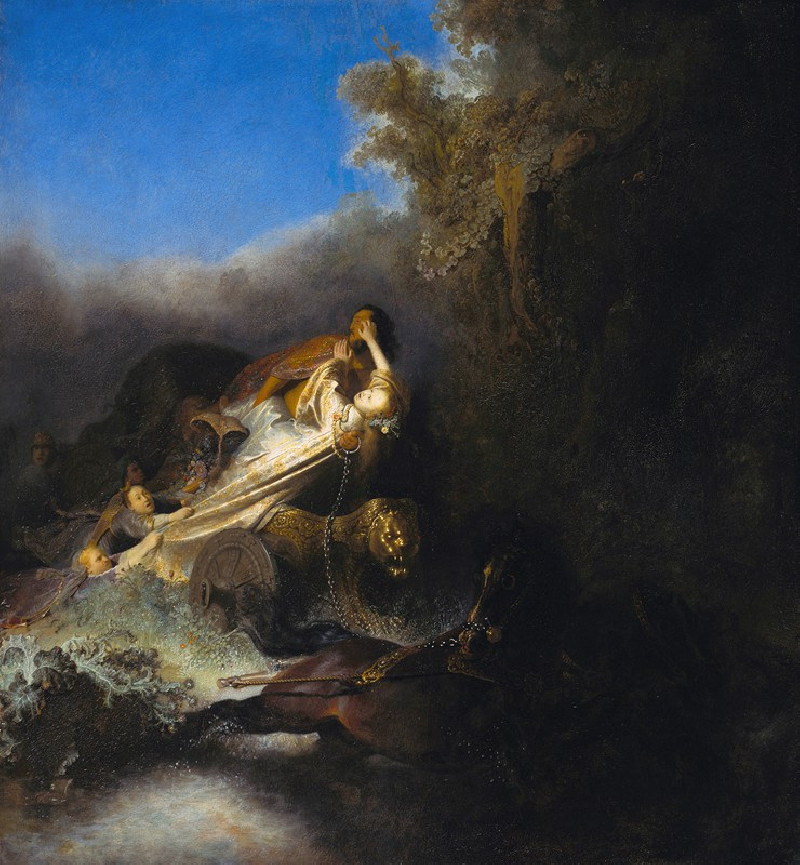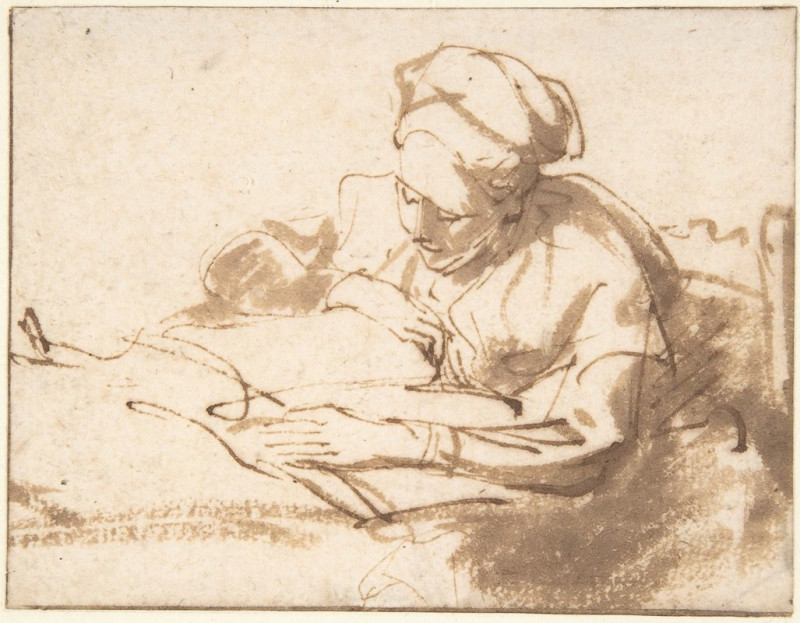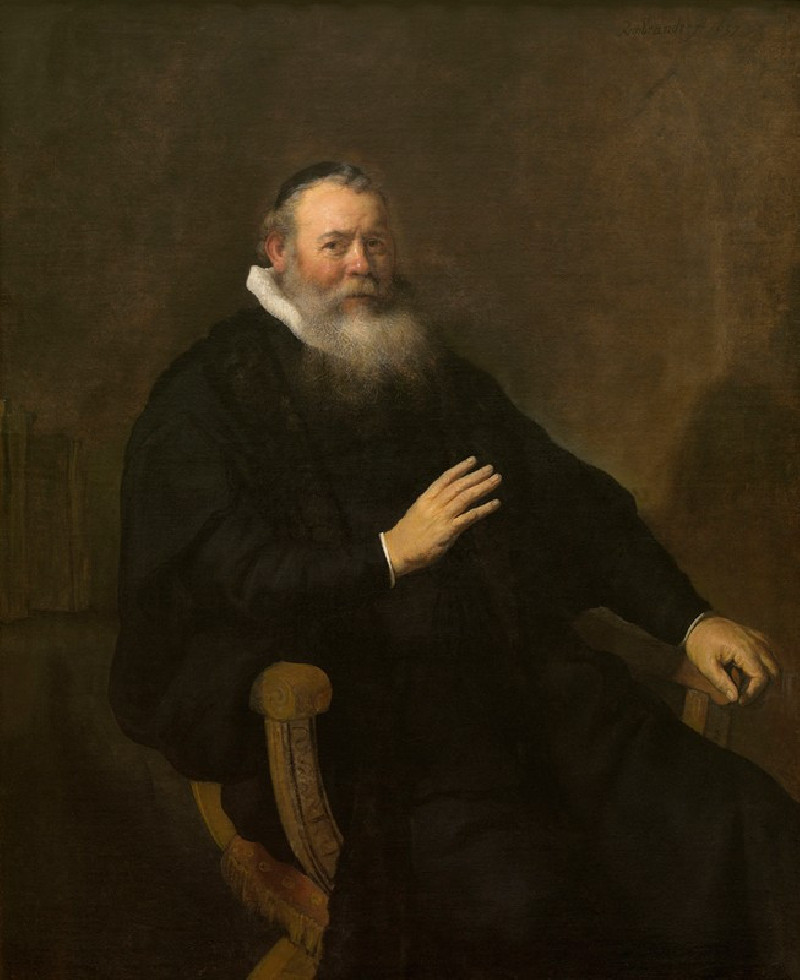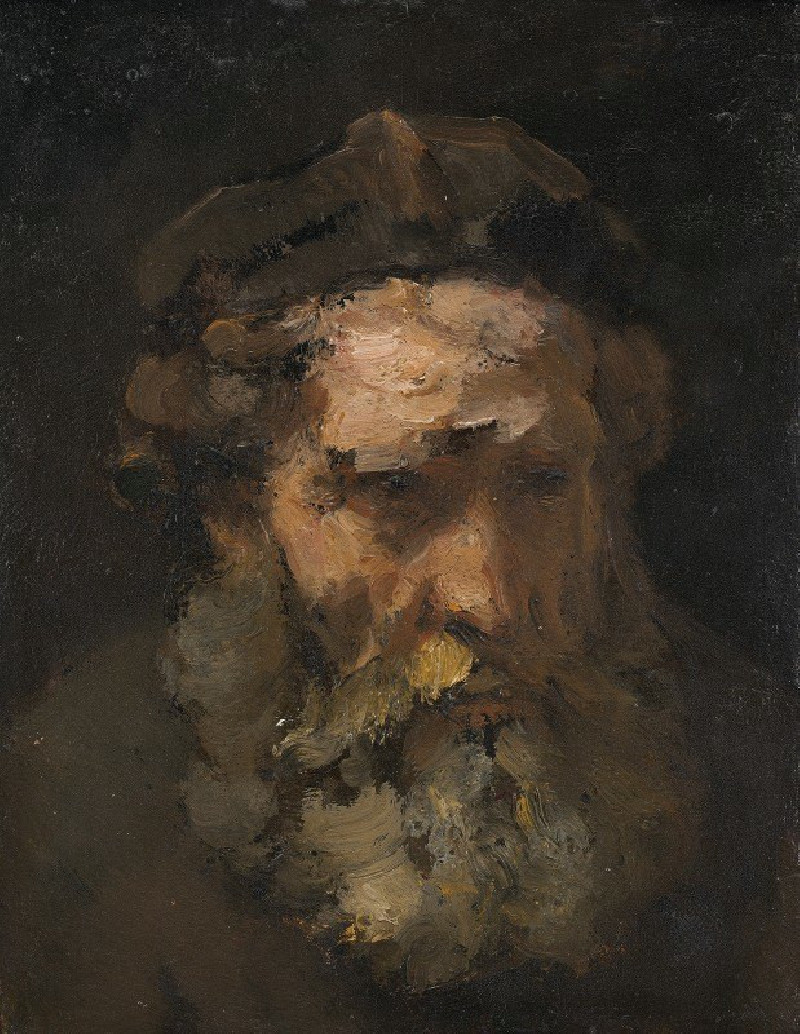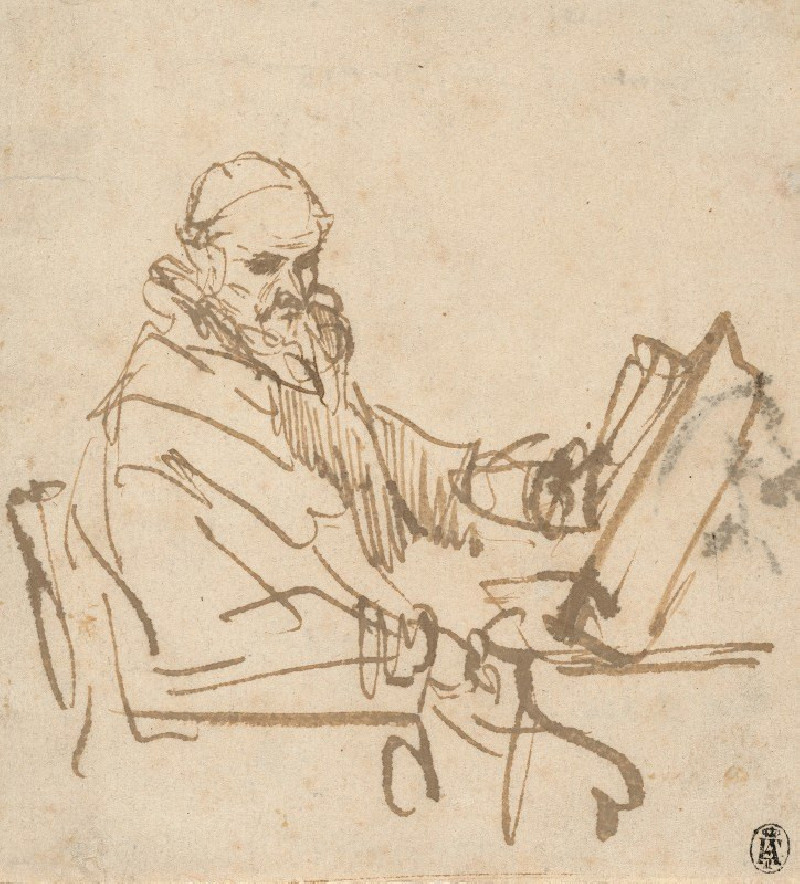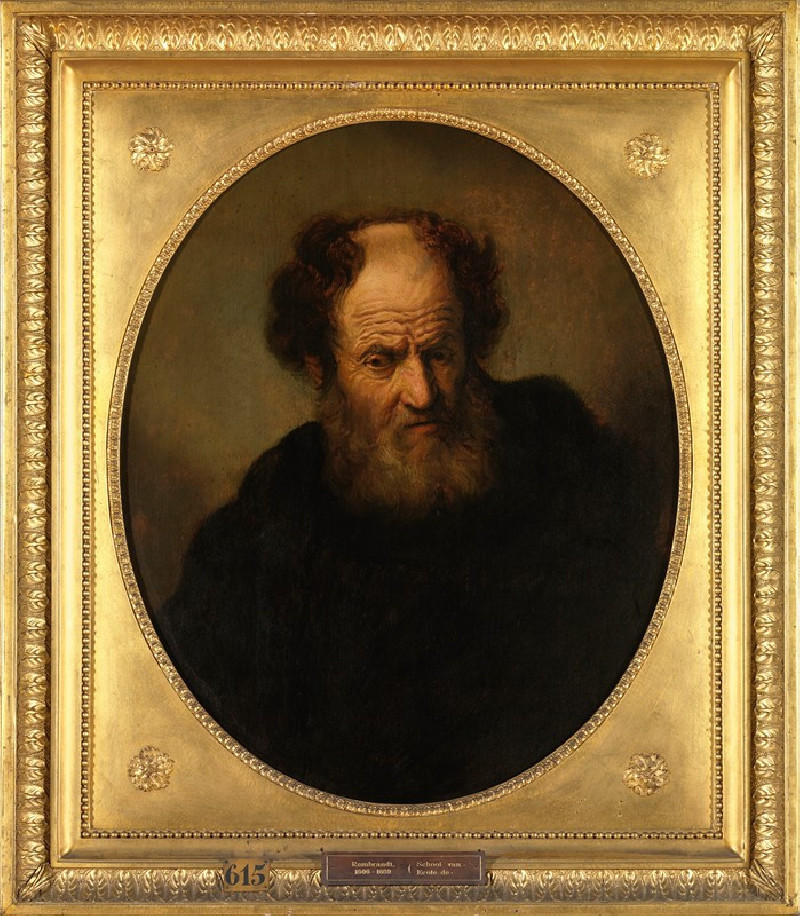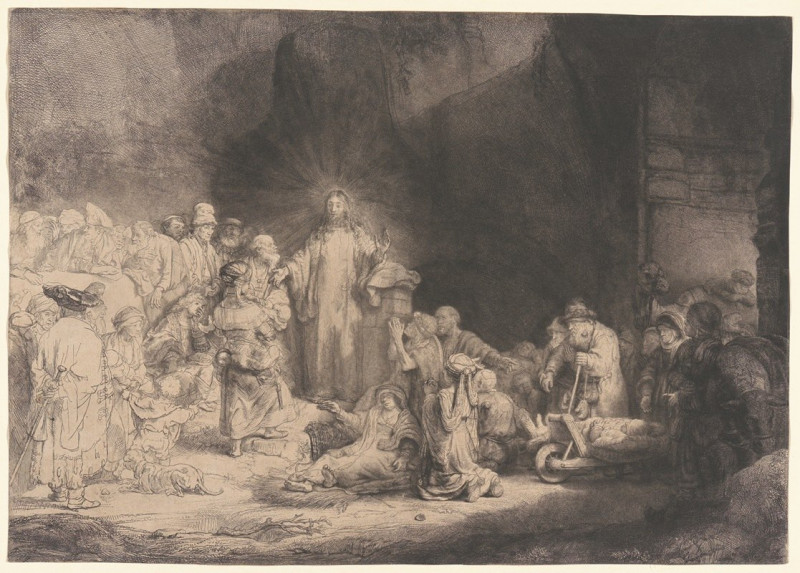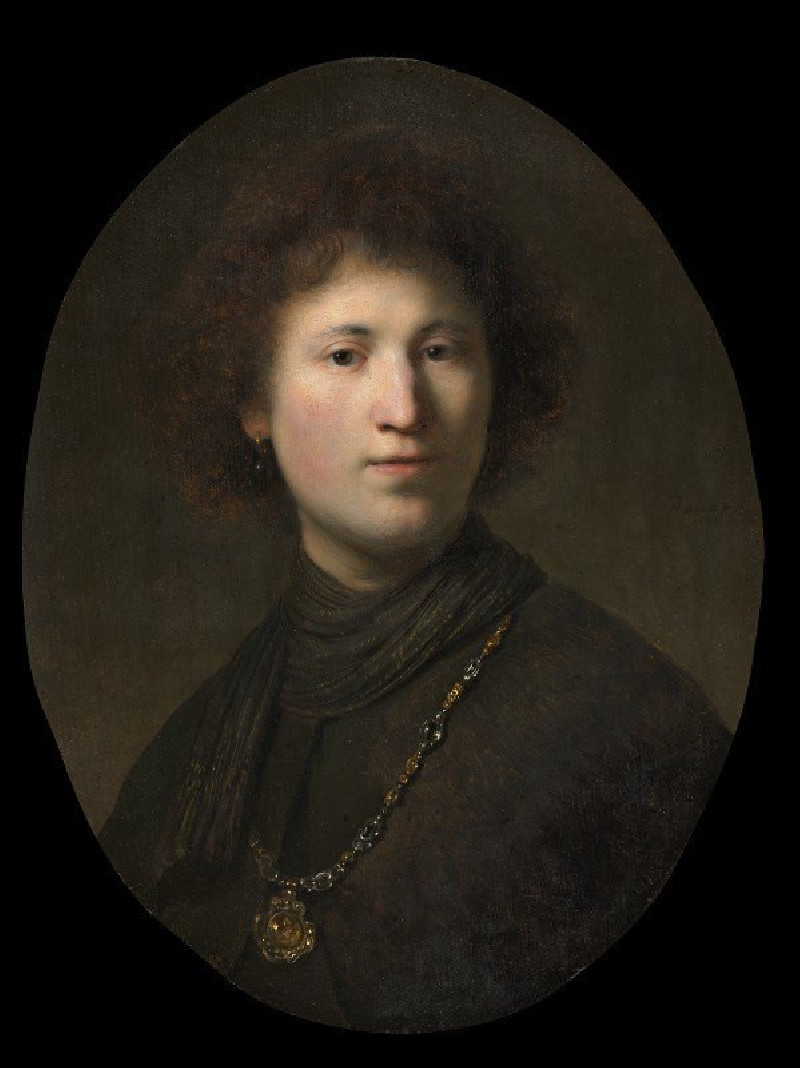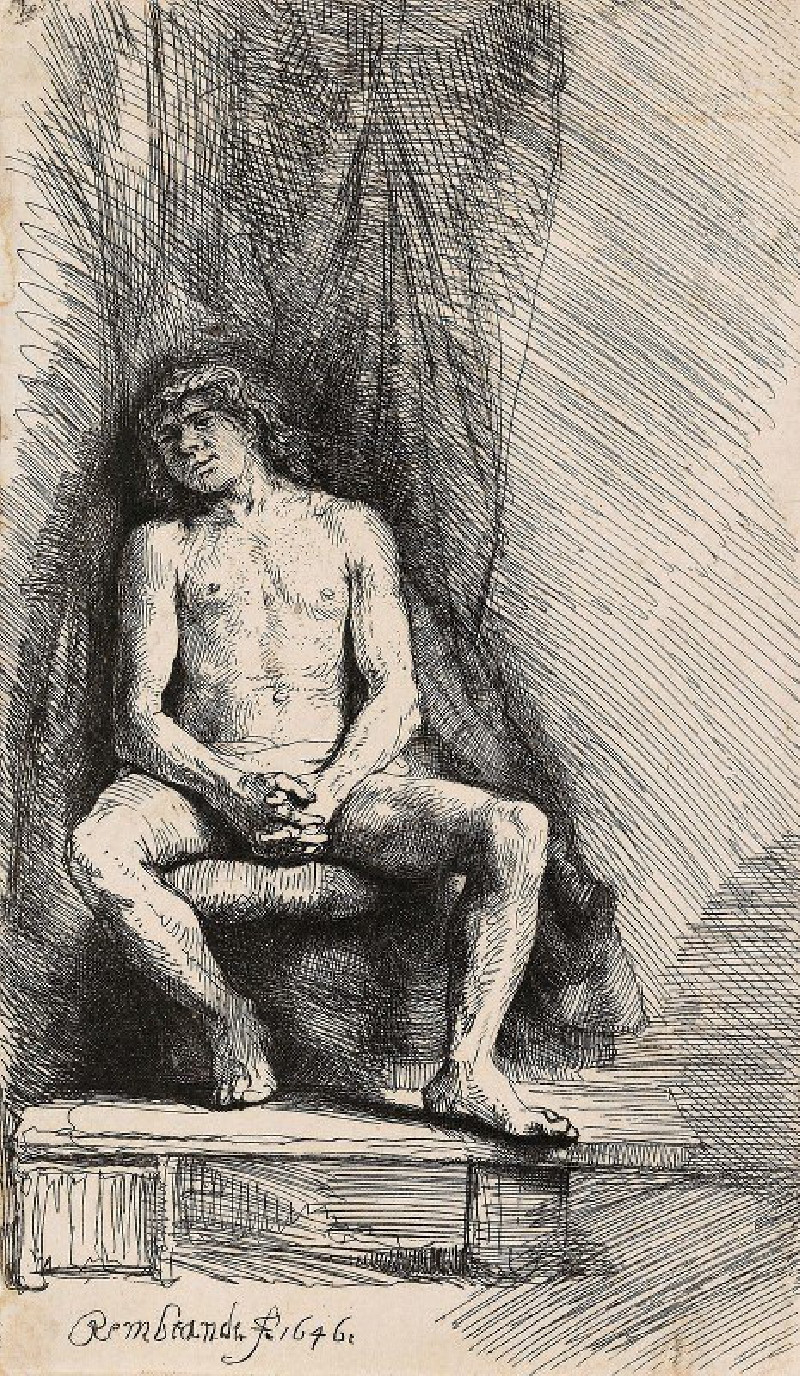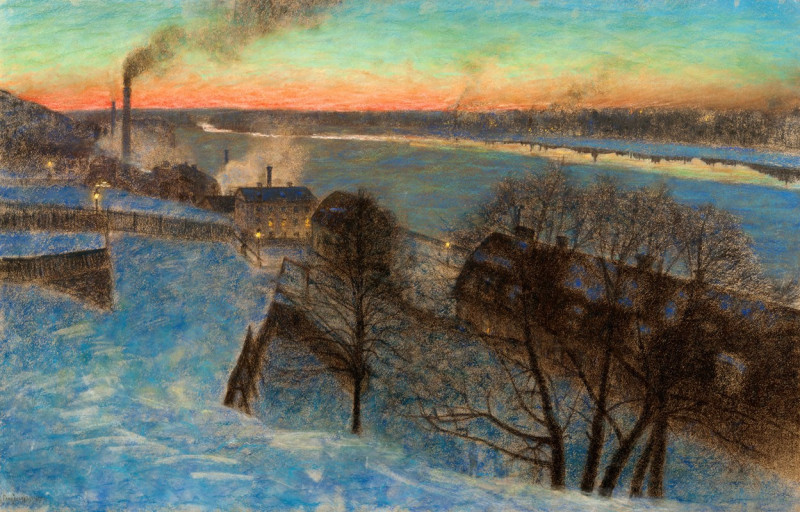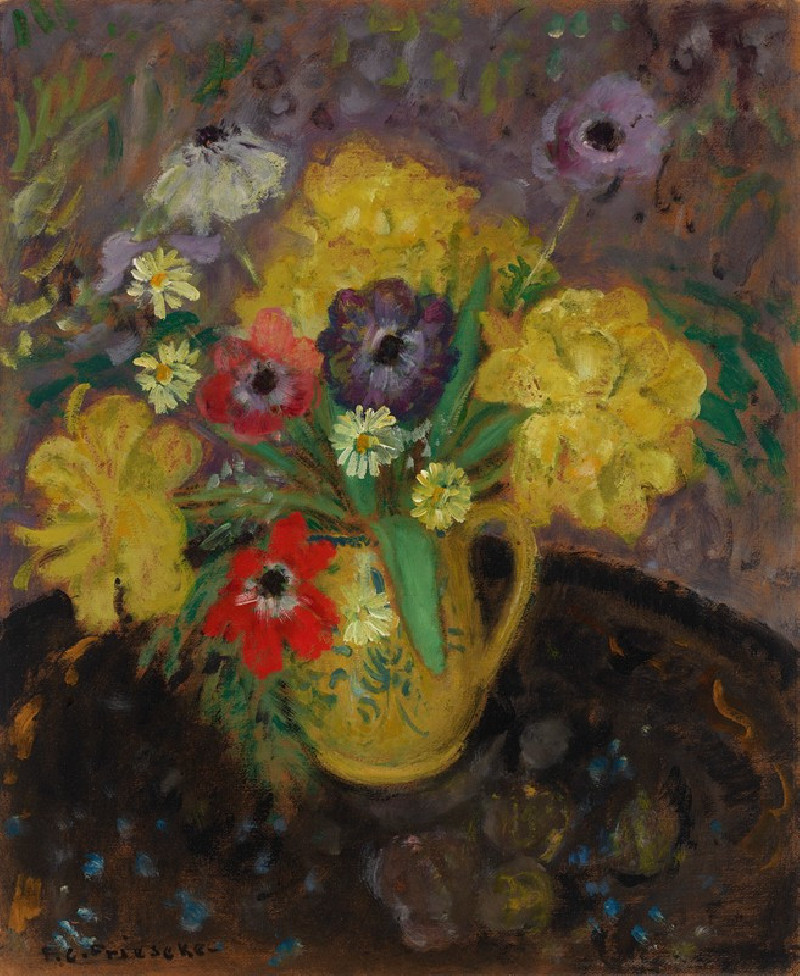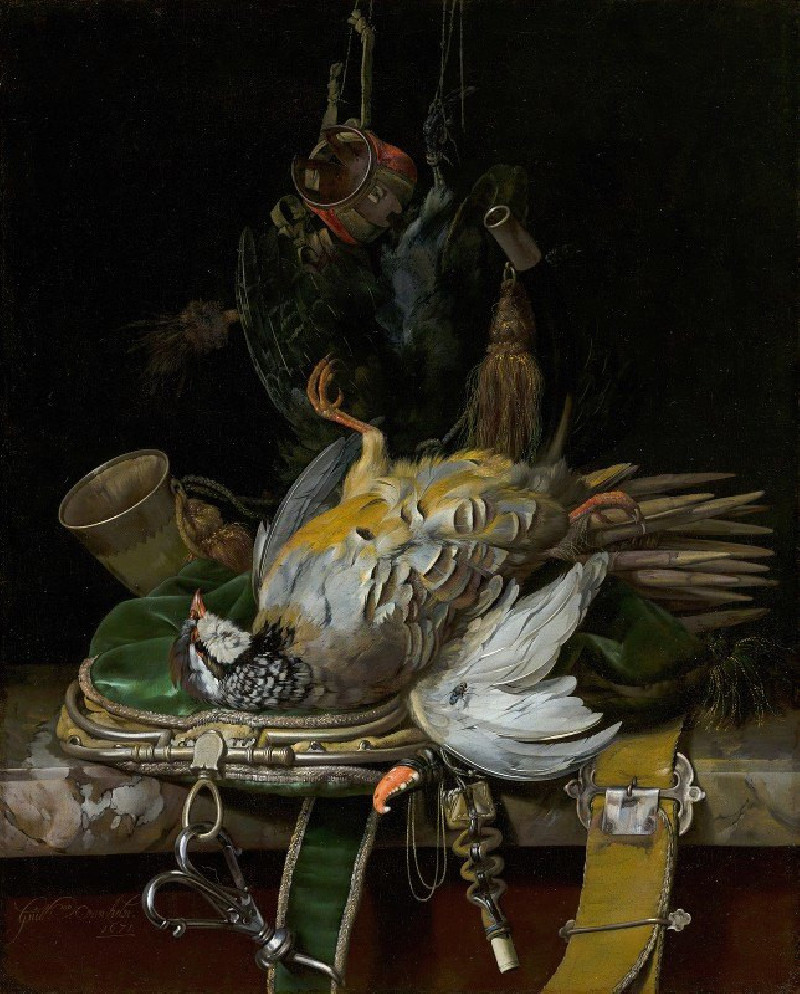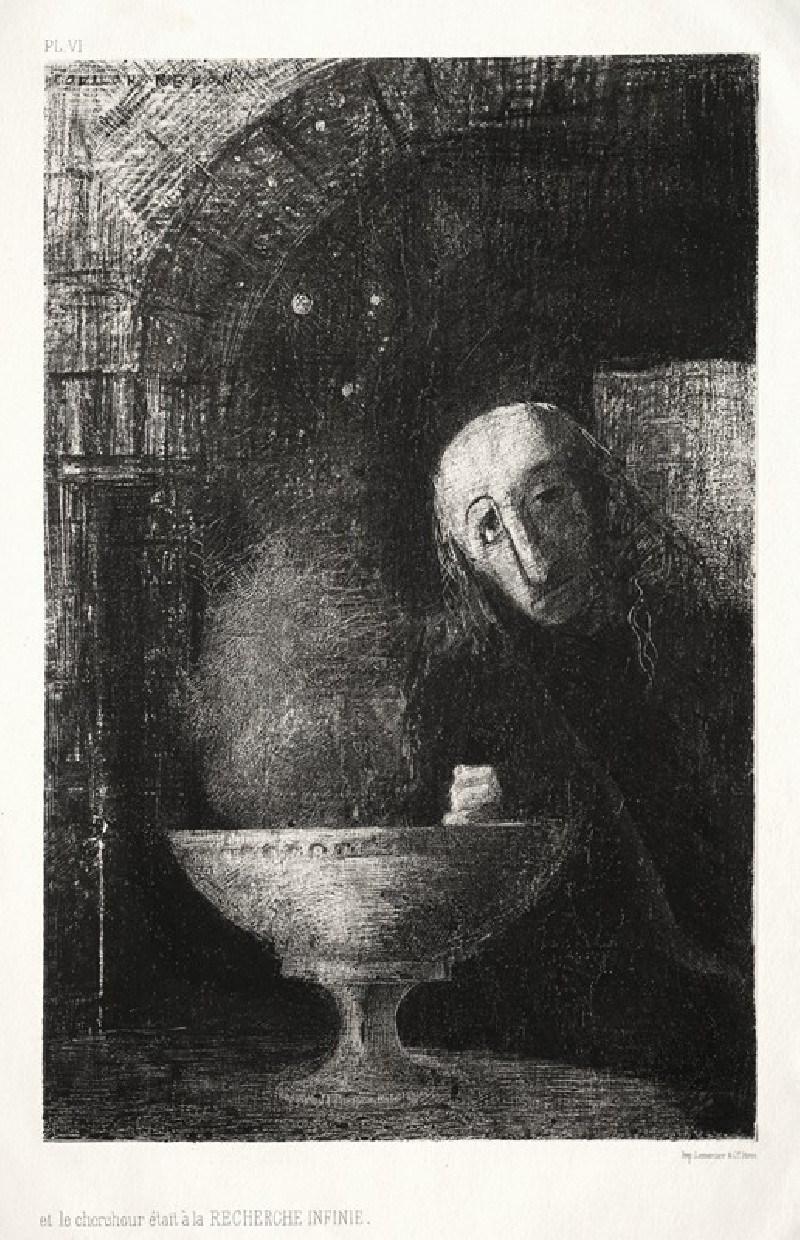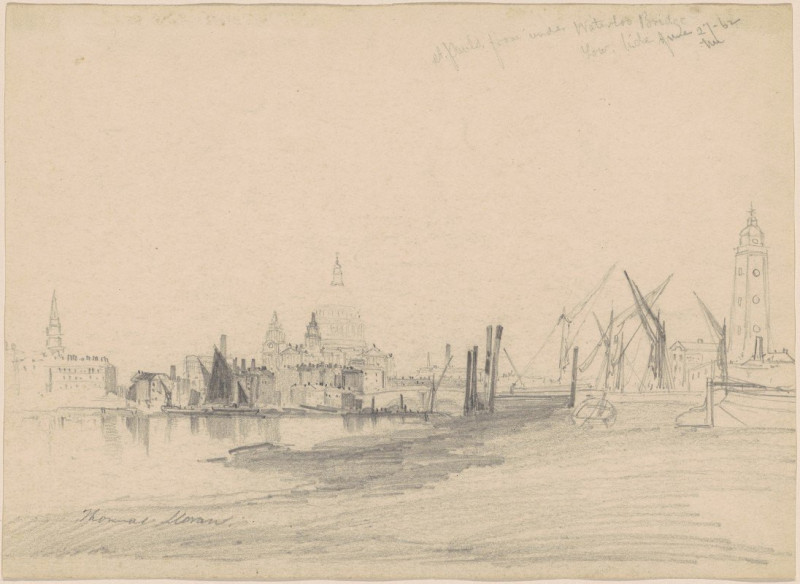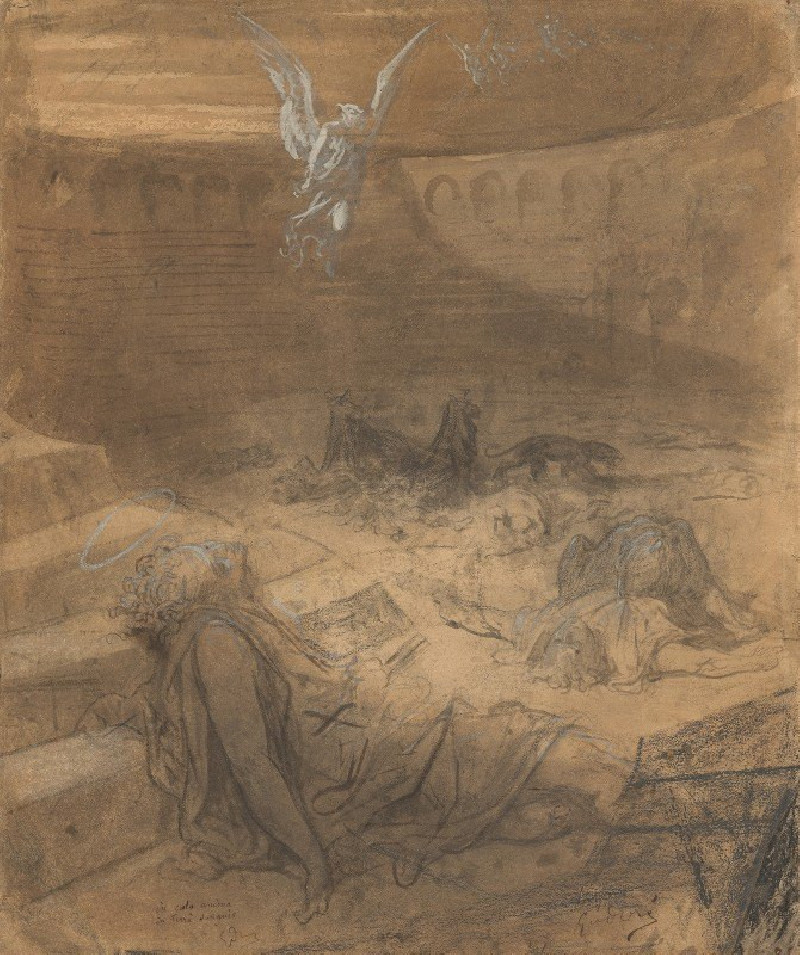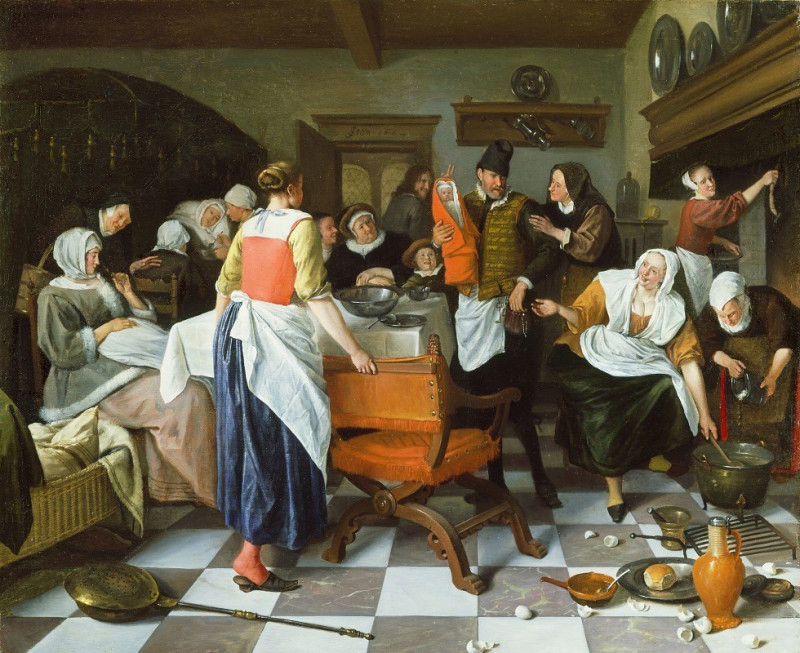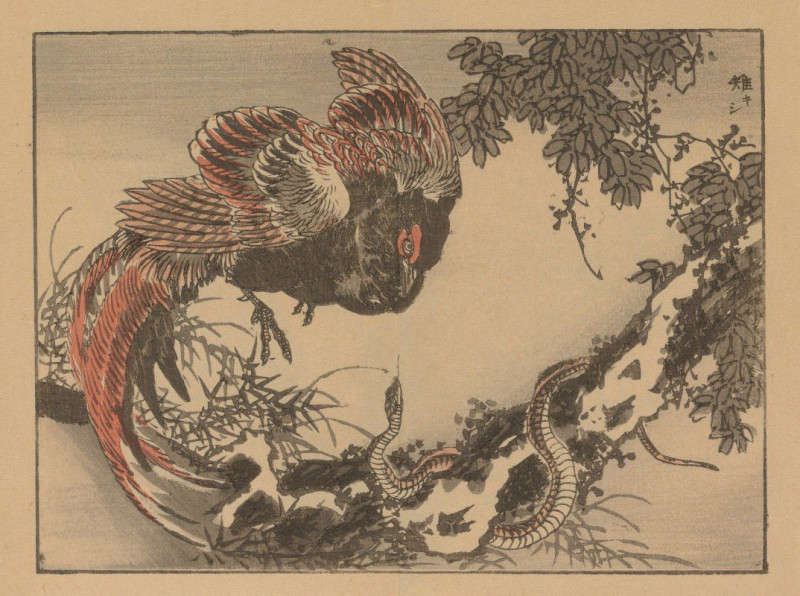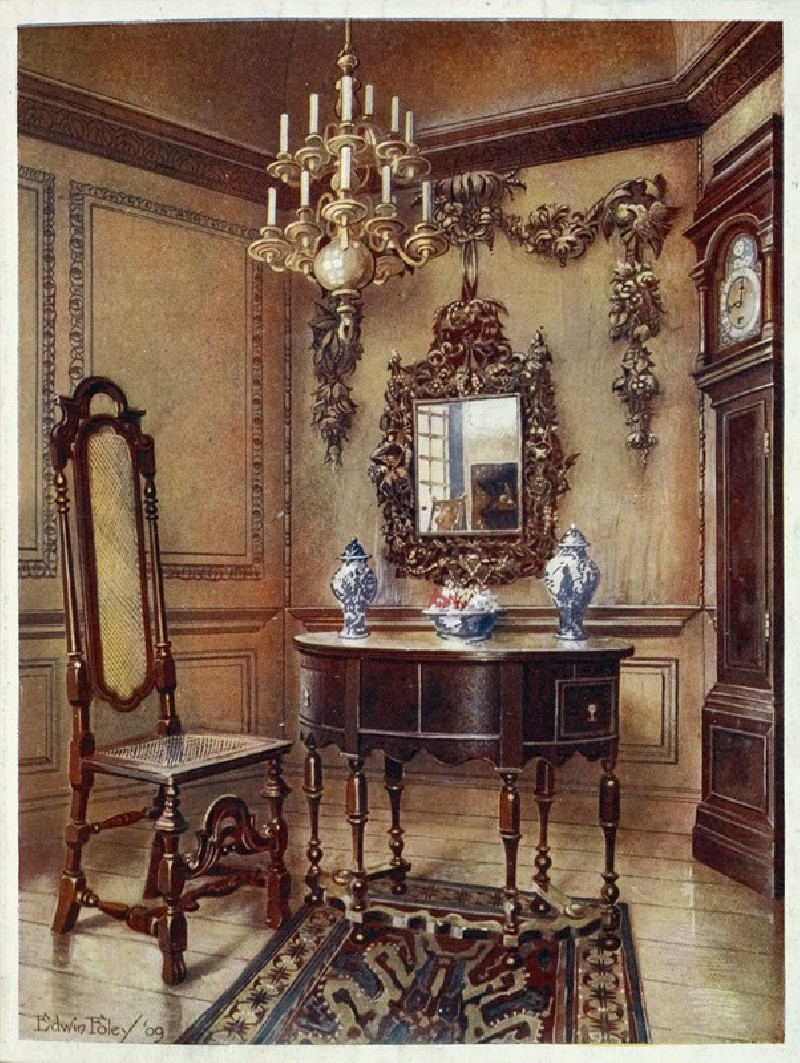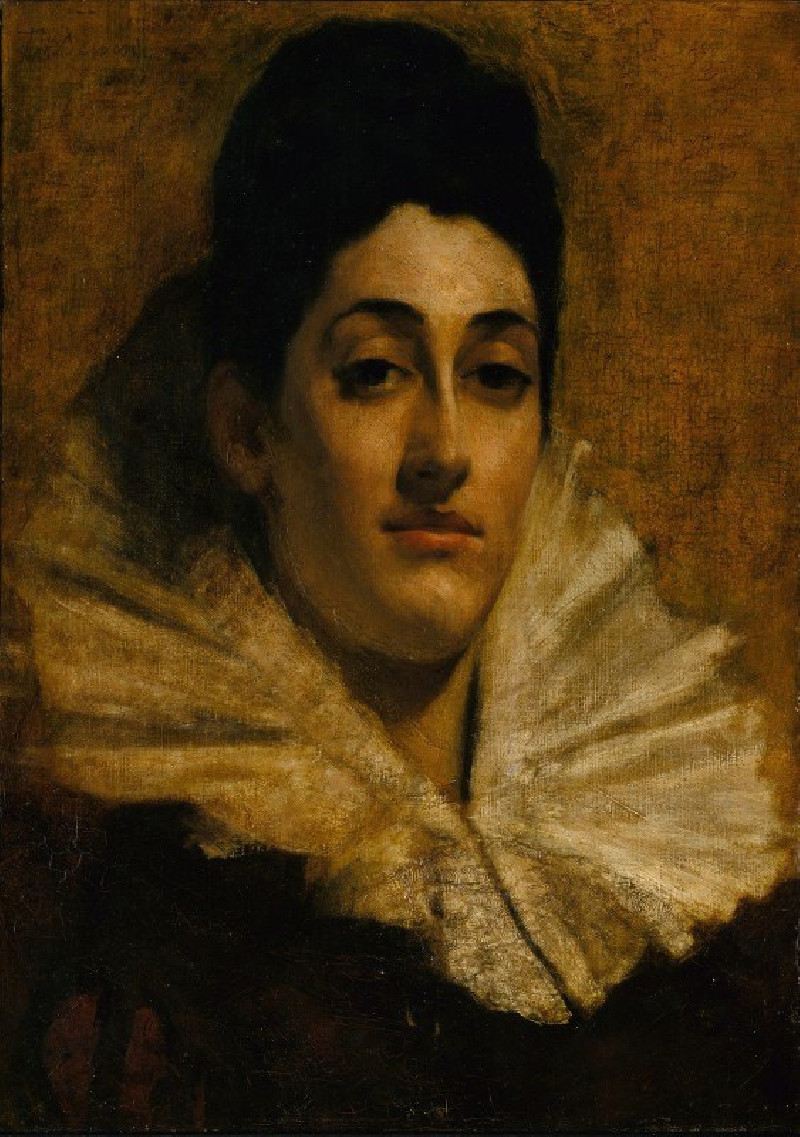Oopjen Coppit (c. 1634)
Technique: Giclée quality print
Recommended by our customers
More about this artwork
Rembrandt van Rijn, a seminal figure in Western art, painted "Portrait of Oopjen Coppit" around 1634. This painting is a stunning demonstration of Rembrandt’s mastery in portraiture, capturing the grandeur and the subtleties of human expression during the Netherlands' Golden Age.In the painting, Oopjen Coppit stands in a formal pose, elegantly attired in a lavish black gown that reflects her wealthy status. The dress is richly detailed with laces and fine fabrics, demonstrating Rembrandt’s skill in rendering textures that enhance the lifelike presentation of his subject. A large, intricate lace collar frames her face, highlighting her poised demeanor and the quiet confidence she exudes.Coppit is adorned with several refined accessories that signify her affluence, including a pearl necklace, a delicate fan held in her right hand, and golden chains. These elements not only enrich the visual experience but also serve as symbols of her social standing.The background, while subdued, features a slight gradient and hints at architectural forms, focusing the viewer’s attention firmly on the subject. The use of lighting is particularly noteworthy; Rembrandt’s expert employment of chiaroscuro adds depth and dimension, creating a realistic portrayal that seems to bring Coppit to life."Portrait of Oopjen Coppit" is not just a display of wealth and status, but a window into the soul of the sitter, showcasing Rembrandt’s unparalleled ability to marry exterior elegance with profound, introspective depth.
Delivery
Returns
Rembrandt Harmenszoon van Rijn was a Dutch draughtsman, painter, and printmaker. An innovative and prolific master in three media, he is generally considered one of the greatest visual artists in the history of art and the most important in Dutch art history. Unlike most Dutch masters of the 17th century, Rembrandt's works depict a wide range of style and subject matter, from portraits and self-portraits to landscapes, genre scenes, allegorical and historical scenes, and biblical and mythological themes as well as animal studies.

